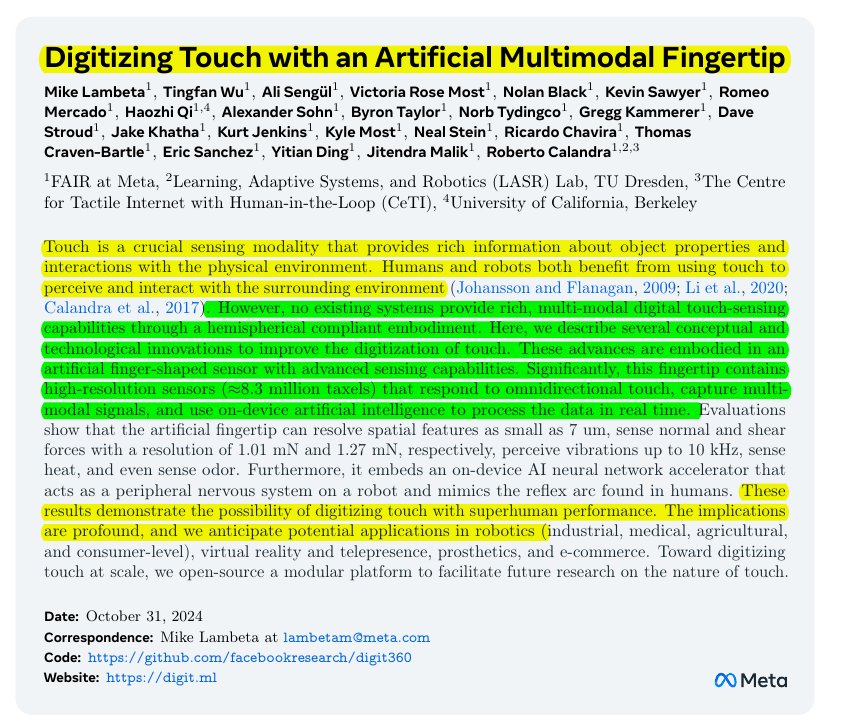Digitizing Touch with an Artificial Multimodal Fingertip
Great research from @Meta. An artificial fingertip that captures touch with superhuman precision using 8.3 million sensors.
Great research from @Meta
An artificial fingertip that captures touch with superhuman precision using 8.3 million sensors.
Biomimetic fingertip sensor processes touch data faster than human nervous system
Merges visual, audio, and force sensing at microscale
🤔 Original Problem:
Existing tactile sensors lack comprehensive touch digitization capabilities. They can't simultaneously achieve high spatial resolution, force sensitivity, and multi-modal sensing while maintaining real-time processing speeds.
💡 Solution in this Paper:
→ Developed an artificial fingertip with 8.3 million taxels and advanced hemispherical sensing
→ Integrated custom hyperfisheye lens system with novel thin-film coating technology
→ Implemented on-device AI neural network accelerator for real-time processing
→ Combined multiple sensing modalities: visual, pressure, audio (up to 10kHz), temperature, gas
→ Used silver-based chemical deposition for ultra-thin reflective coating (6μm thickness)
→ Optimized surface scattering between 20° to 25° half-width-half-max angles
🔑 Key Insights:
→ Controlled surface texture scattering outperforms traditional Lambertian scattering
→ Natural fingertip texture can replace explicit markers for shear force detection
→ Local processing reduces latency from 6ms to 1.2ms for reflex-like responses
→ Multi-modal fusion improves material classification accuracy to 91%
📊 Results:
→ Achieves 7μm spatial resolution
→ Normal force sensitivity: 1.01mN
→ Shear force sensitivity: 1.27mN
→ 4X better spatial resolution than existing sensors
→ 6X improvement in normal force detection
→ 9X better shear force sensitivity
🛠️ The technical architecture enabling multi-modal sensing:
→ Uses a custom hyperfisheye lens system
→ Employs novel thin-film coating technology
→ Integrates multiple sensor types (visual, pressure, audio, temperature, gas)
→ Features modular electronics design
→ Includes on-device AI processing capabilities



